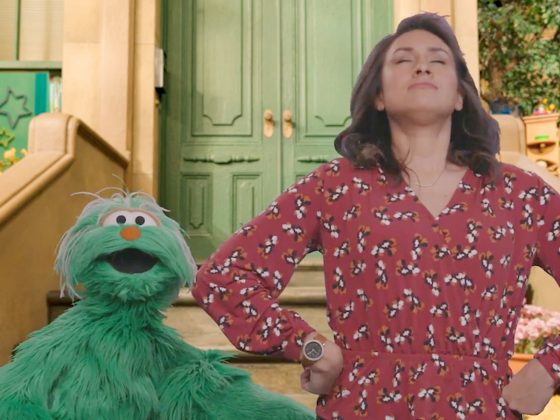
Spanish Is My Superpower
A video about a racial confrontation and one way to handle it.
It’s hard even for adults to know how to handle scary or hurtful race-based encounters, and it’s sometimes confusing to know when it’s time to speak up or stick up for oneself and when it’s best to walk away from the conflict. It can also be hard to know how to move on after what happened and begin to heal. Share this video with children to explore important skills in dealing with racism.
Before viewing the video together with children, explain that you’re going to watch a video about a time Rosita and her Mami were in the supermarket and some people told them to stop speaking Spanish.
During viewing, you can pause to answer any questions children may have. You can point out the different strategies Rosita and her Mami used: Because they felt scared and uncomfortable, they chose not to respond, and later, they talked about it and called the store to report what had happened.
After viewing:
- Ask children why they thought Rosita’s Mami decide it was better to walk away rather than speak up. Remind them that if they don’t feel safe, it’s always better to remove themselves from the situation and find a grown-up. Grown-ups can remove themselves from situations in which they don’t feel safe, either.
- If children know another language, remind them that they have a superpower like Rosita’s. Knowing two (or more) languages is great for building your brain! What other superpowers—special skills or strengths—do children have? If children are bicultural (when the home culture is different from the culture outside the home) point out that that’s a superpower, too.
- Explain how the people who were acting unkindly were the ones with the problem, not Rosita and her Mami. Rosita’s and Mami’s only job was to take care of themselves.
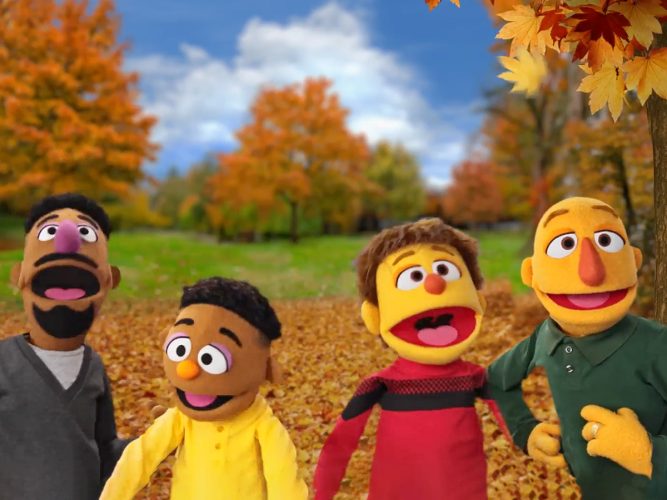
The Wiggle-Jiggle Game
A video about a getting-to-know-you game that helps kids appreciate similarities and differences.
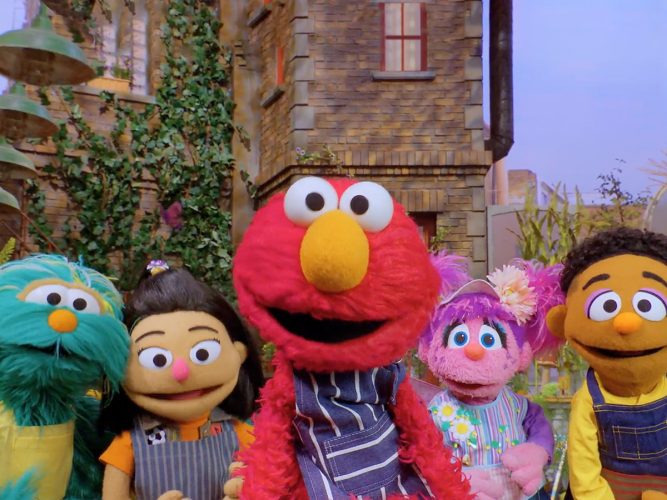
Community Song
A video about community.
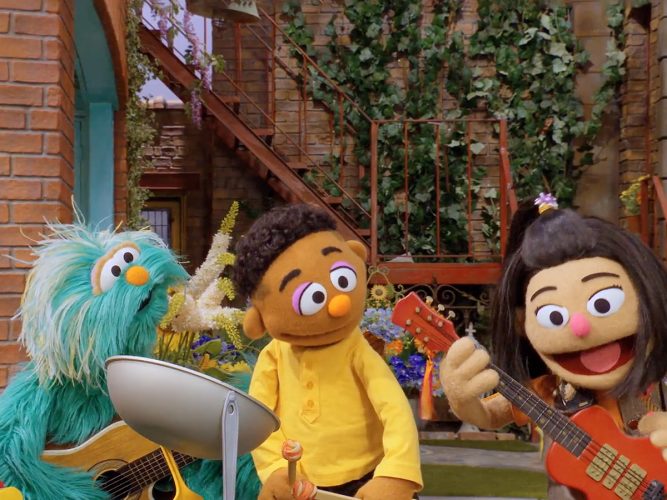
Musical Show & Share
A video about coming together to create something beautiful.
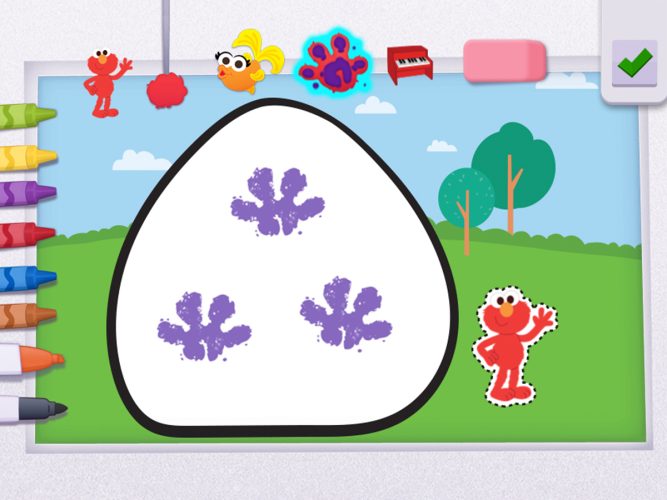
Welcome to Our Garden
An interactive game in which children add rocks to the Sesame Street community garden.
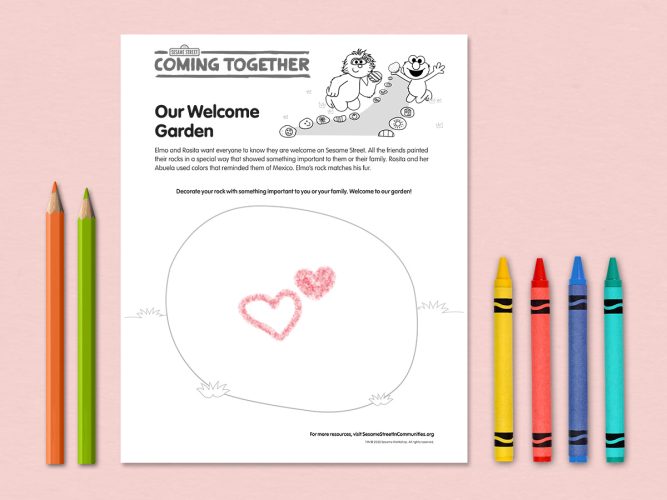
Our Welcome Garden
A printable page about a community rock garden.
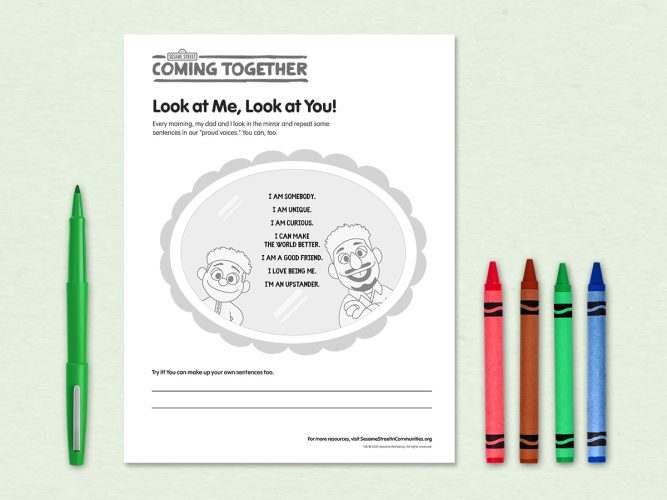
Look at Me, Look at You!
A printable page with parent-child affirmations.
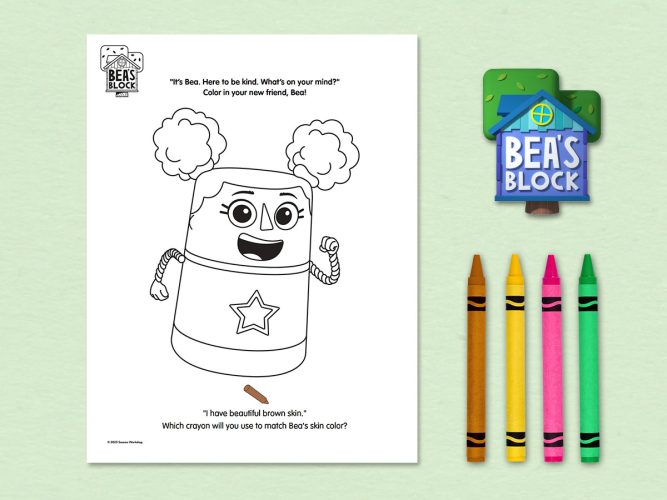
Bea’s Block Kindness Adventure Color & Activity Guide
Activities and coloring pages for children that celebrate kindness.
